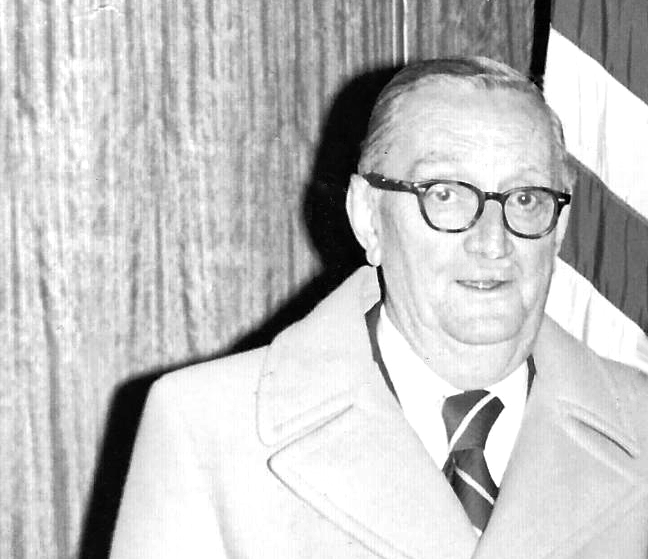Did Covington hitman kill New Orleans hairstylist?
On August 11, 1980, Roy L. Cooper, 51, brother of Covington Mayor Ernest Cooper, shot and killed his daughter’s former boyfriend, Charles Olan Thrash, 52, a career criminal and reputed Dixie Mafia hitman.
When Thrash died, investigators lost their prime suspect in two notable murder cases. In May 1983, Mobile, Alabama District Attorney Chris Galanos closed the 1973 unsolved murder of newspaper editor Arch McKay, telling associates he felt convinced the late hitman killed him. “We don’t know who hired him killed or why,” he told reporters that same week, “But we’re certain we know who did it, and he’s dead, too.”
In New Orleans, neither the DA nor the police department made any such announcement, and today, the murder of 42-year-old hairstylist Lloyd Joseph Veazey remains an open cold case homicide.
Just after seven on a Monday evening, February 23, 1970, hairdresser Arnold Vandiber stopped at 829 Dumaine, the Vieux Carre apartment of co-worker L. J. Veazey. Arnold later told police he felt concerned when his friend uncharacteristically skipped work that afternoon without calling their supervisor. At L. J.’s apartment, across the street from Arnold’s own, Arnold found the door ajar. Inside, he saw scattered furniture and paper, as if someone were frantically looking for something.

In the bedroom, Arnold found his friend’s body next to the bed, covered in a pile of bloody clothing. He backed out of the room and stepped across the street to phone NOPD.
Sam Moran, lead investigator with the coroner’s office, on the scene, discovered a pillow with bullet holes and powder burns, indicating the killer wrapped the pillow around the murder weapon to muffle the shots.
The investigator told reporters someone shot the victim twice in the back of the head and once in the neck. The assassin then rolled the victim onto his back and shot him once in the mouth.
He also reported finding the victim’s pants pockets turned inside-out.
At the Orleans Parish coroner’s office, Arnold Vandiber told Sam Moran he last saw L. J. Veazey at the MB Beauty Shop, located inside the Maison Blanche department store at 901 Canal Street.
Sunday night, February 22, a man entered the salon, asking for Lloyd Veazey. Arnold told L. J. a guest asked about him. L. J. looked toward the door and identified the man without saying his name, noting only that the two of them had served in the Korean War together.
Arnold said L. J. left with the man after work. The man, Arnold told Sam, had red hair, a glass eye, and walked with a limp. Sam Moran recognized immediately the unique description of Charles Olan Thrash, but soon learned that Thrash had an alibi. Five years earlier, convicted of multiple armed robberies, a New Orleans judge sentenced Thrash to 58 years in the Louisiana State Penitentiary at Angola.

Remembering the Alabama DA’s statement about Thrash and the 1973 murder of Arch McKay, I reached out to retired Major Wilbur Williams, who told me Shreveport police told his office the governor of Louisiana pardoned Charles Thrash. Major Williams also recounted how he got involved.
“I took a stolen auto report on the car that they arrested Thrash on in Shreveport,” he said. The car had been stolen from Mobile, Alabama, the day someone shot Arch McKay in his vehicle. “While in Shreveport, I met a Detective Jeter, who told me about Thrash and their belief that he may have been responsible for multiple homicides ordered by Carlos Marcello, including one very similar to the McKay hit. Information showed that Thrash and his traveling mate had been in Mobile at least a month before the McKay hit.”
“When I got back,” the retired officer remembered, “I reported to the Chief of Detectives what I found, and he was very flippant with his response. I could not understand, so I went to the DA. Same response. They said they knew about Thrash, and he was not involved.”
“I went about my duties, patrolling a beat in downtown Mobile, and shared my experience with some fellow officers. One of these guys eventually went to work for a new DA and shared my information. The DA invited me to lunch with him and his investigator, and I told him my story,” he said.

“I moved to Homicide, and we worked on the McKay case for a couple of years. When Charlie ended up dead in Covington, the DA was doing an end-of-the-year recap with a reporter from the Mobile Press and mentioned that they had solved the McKay murder. That made big news and got me in a lot of trouble with the Mobile Police Department,” he remembered.
“Except me and my boss,” he said. “Nobody still working there knew about the Thrash investigation. I got called to the Chief’s Office, and it wasn’t a pretty sight. I survived, thanks to the DA supporting me, but it got interesting for a while.”
“I thought back then that Thrash killed McKay, and I think the same thing today. I don’t know who paid for the hit, and I don’t know for sure why it happened, but I believe he did it,” Major Williams told me.
My next stop in the Veazey investigation is the state archives in Baton Rouge. To determine what year “the governor” pardoned Thrash, I must first confirm which governor pardoned him. Governors John McKeithen and Edwin W. Edwards both had ties to reputed Mafia kingpin Carlos Marcello.

